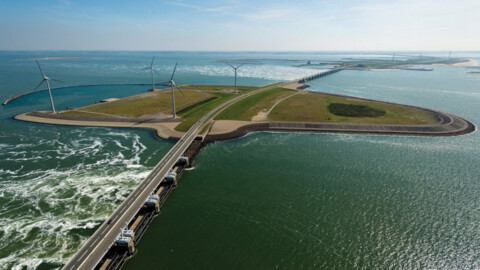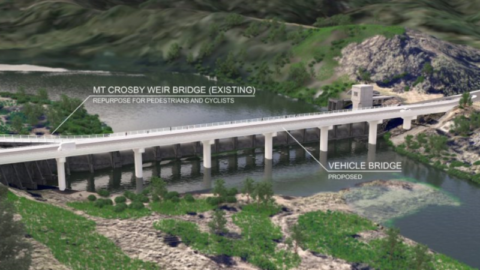Victorian electricity distributor United Energy (UE) worked right through Melbourne’s COVID restrictions in 2020 to keep electricity supplies safe and reliable for its customers, but it was also preparing for summer, which usually sees more extreme conditions impact the network and put a strain on power systems.
The distributor rolled out a $185 million program of works to ensure the network was better prepared for this summer than ever before to support its customers, which are in Melbourne’s eastern and south eastern suburbs, as well as on the Mornington Peninsula.
United Energy General Manager, Electricity Networks, Mark Clarke, said heatwaves, high winds and wet weather could all cause power outages over summer, noting several storm events over the last few months of 2020.
“Our crews worked year-round to make sure our network is reliable, but we recommend everyone has a plan to have the power they need over summer,” Mr Clarke said.
United Energy and its resource partners undertook more than one million work-hours to ensure all network inspection, maintenance and testing was complete ahead of the annual bushfire season.
The highlights of this work include upgrading 47 local substations, (including eight in hazardous bushfire risk areas), installing 2.9kms of covered conductor to insulate powerlines– with another 2.2km to be constructed over coming months – and 91 network spreaders to prevent clashing.
Three Rapid Earth Fault Current Limiter (REFCL) devices were also installed to act as a network safety switch to reduce the risk of fires starting from electrical assets in high bushfire risk areas. These devices are active in Dromana, Frankston South and Mornington, and protect 680km of powerlines servicing 63,500 customers.
The annual, extensive vegetation inspection and cutting program also completed 100 per cent of inspections in high risk areas, with vegetation cut back from tens of thousands of powerline spans.
Mr Clarke said the extensive efforts created greater capacity to deal with peak summer demand, while keeping the network safe and reliable.
“What we’ve also seen is that while customers were working or studying from home, they have become more conscious about their reliance on electricity,” he said. “Our customers use more power in summer than any other season, so we recommend they know what they need to do if the power goes out for any reason.”
Covered conductor
One of the key upgrades United Energy made this summer was a $1.7 million roll out of new technology on the Mornington Peninsula to reduce the risk of fires and outages.
United Energy replaced 5.1km of high-voltage powerlines with covered conductor across the Mornington Peninsula, with 2.9km completed before Christmas and another 2.1km delivered by February.
Covered conductor is a technology that covers long lengths of powerlines and acts like insulted sleeves. They are being rolled out in targeted high bushfire risk areas across the network where powerlines can also be affected by extreme weather like strong winds, salt spray, moisture or frost.
By protecting powerlines, the covers also help reduce the likelihood of faults and fires. The areas chosen for the rollout are based on bushfire risk and the number of previous outages in the area, and follow United Energy’s successful trial of covered conductors in Cape Schanck in recent years.
Project Manager, Rob Doyle, said the covered conductor works were part of a broader five-year program to roll out the technology across high risk areas.
“We’re progressively replacing the most vulnerable high-voltage wires with this technology across our network to increase reliability and to decrease the risk of fires starting,” Mr Doyle said.
“This means the network is much better protected if an object such as a tree branch or an animal happens to comes into contact with powerlines.” The roll out included installations at Merricks North, Somerville, Red Hill and Hastings.

Meanwhile, specialist crews moved almost 600m of high-voltage lines underground along Valley Views Lane in Main Ridge on the Mornington Peninsula ahead of summer.
At the site, there were at least 55 large pine trees located on the side of a slope that had been leaning towards powerlines, posing a risk of starting a fire or causing a power outage if a nearby tree or limb fell.
Mr Doyle said undergrounding the powerlines had reduced the risk of fires starting from electrical assets as well as minimising unplanned outages in the future.
“This line is located on the north west face of the slope, meaning any potential fire start would move quickly given the hot summer winds which normally come in from that direction,” Mr Doyle said.
In early 2020, one of the large trees fell onto the powerlines, affecting power to customers for 12 hours. Mr Doyle said undergrounding powerlines was just one way United Energy was improving safety in the Mornington Peninsula.
“The Peninsula is a high-risk area for fires and throughout the year we have continued conducting critical maintenance and major projects to ensure the network is ready for summer,” he said.
Advice for customers
No matter the preparation a network does, there are likely to be extreme conditions each summer that leads to outages. A checklist for customers on how to prepare for summer power outages is available at www.unitedenergy.com.au and includes advice on:
- Looking after your health – particularly if you rely on life support equipment
- Staying connected – by having mobile phones and laptop computers charged to stay connected with family and friends
- Pre-cooling your home – if a power outage is planned as part of ongoing maintenance activities on the network
- Having backup energy ready – like batteries, lamps and barbeques
- Staying up to date – by downloading the VicEmergency app and signing up for United Energy SMS notifications about power supplies

















